|
|
 |
 |
 |
 |
 |
|
| Southern Paiute Homelands |
|
|
|
 |
|
All photos are by Max and his friends |
|
 |
|
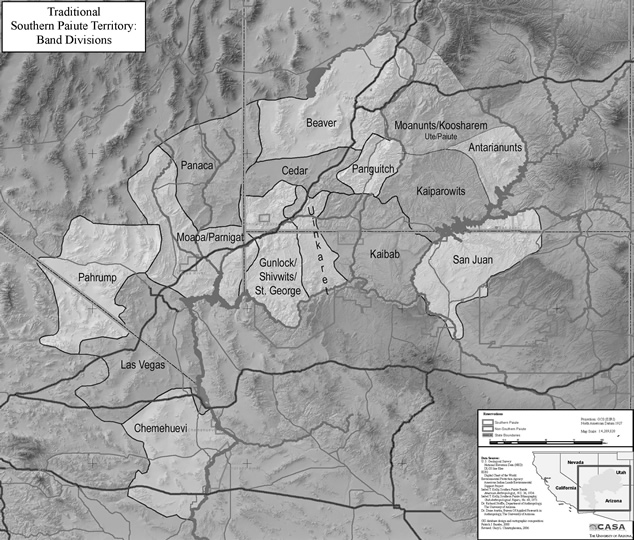 |
|
 |
|
America's Songlines
The Southern Paiute are North America's equivalent of Australia's Aborigines: people with a culture sophisticated enough to adapt to the harshest environments and imaginative enough to describe the evolution of their landscape in songs tracing mythological trails and sites which the People continued to follow in the eternal present of their seasonal migrations.
Prior to the invasion of Anglo-Europeans, the Southern Paiute were able to maintain a peaceful existence, because they had settled in challenging habitats that were remote from major trails and trading centers, where they would have come into competition with more aggressive societies. But after the invasion, the eastern Paiute bands were victimized by powerful equestrian tribes such as the Ute, who captured and sold them to the Spanish at Santa Fe, the slave market of the Southwest. And in the 19th century, Mormon settlers took over the most productive Paiute lands and held Paiutes in bondage to work their farms.
Today, they remain dispersed throughout their vast homelands on tiny reservations and as minorities in Anglo communities, deprived of the subsistence base of natural resources that could sustain their traditional lifeway.
Chemehuevi Indian Tribe
Las Vegas Paiute Tribe
Moapa Paiutes
Kaibab Paiute Tribe
Paiute Indian Tribe of Utah |
|
Seduced by the Desert
After growing up in the lush temperate environment of the Midwest, Max was unexpectedly seduced by the Mojave Desert on his first venture off the highway in 1981. Since then, he and his friends have lived and worked in the desert wildlands annually for decades as artists, scientists, and bohemian campers from the city. From the beginning, Max encountered traces of the Southern Paiutes, and he sought them out and studied their traditional lifeways, at the same time as he was befriending desert scientists and joining them in field studies of earth science, biology and archaeology.
Eventually, after finding himself repeatedly drawn hundreds of miles north-eastward to the canyons and mountains of the Colorado Plateau, Max became aware that his beloved landscape corresponds precisely to the traditional homelands of the Southern Paiute, which form an arc curving around the western bank of the Colorado River. |
|
 |
|
Land & Sky
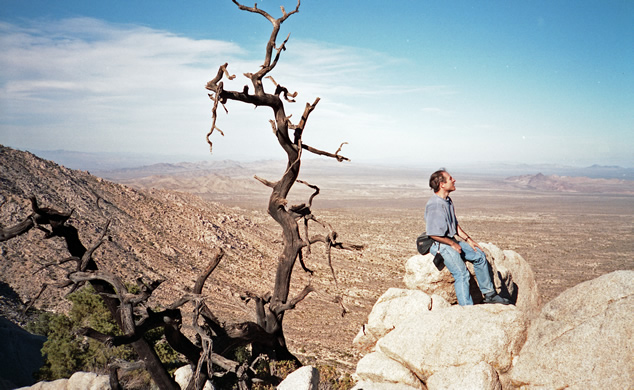
Max atop a mountain range in Chemehuevi territory, at the southwest end of the Paiute Homelands, in October 1995
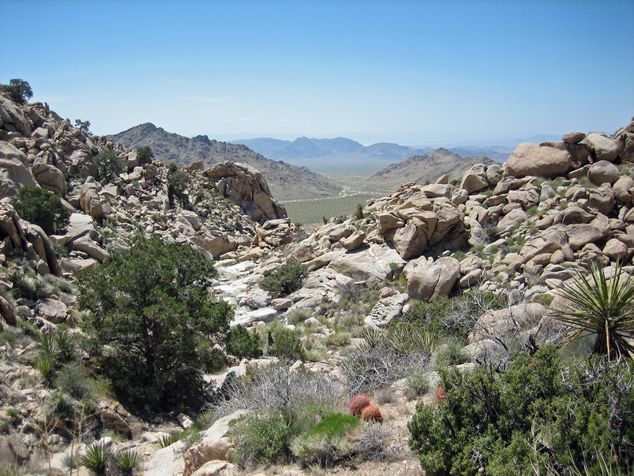
Looking out from the heart of a desert mountain range
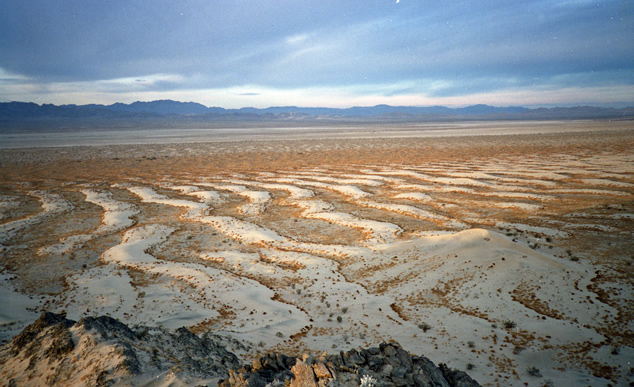
Dunes in Chemehuevi territory
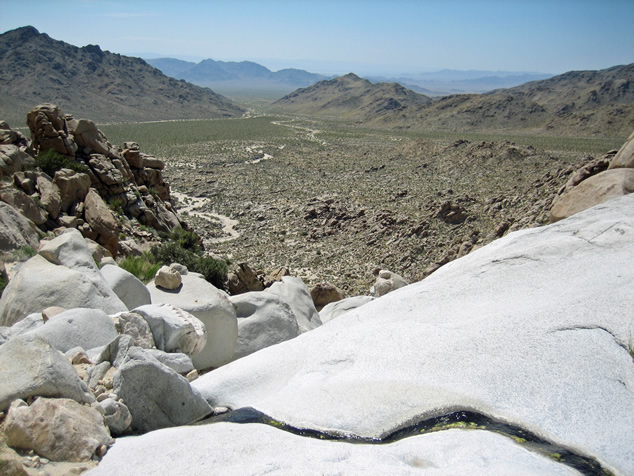
This narrow ribbon, runoff from winter rains, is the only surface water as far as the eye can see
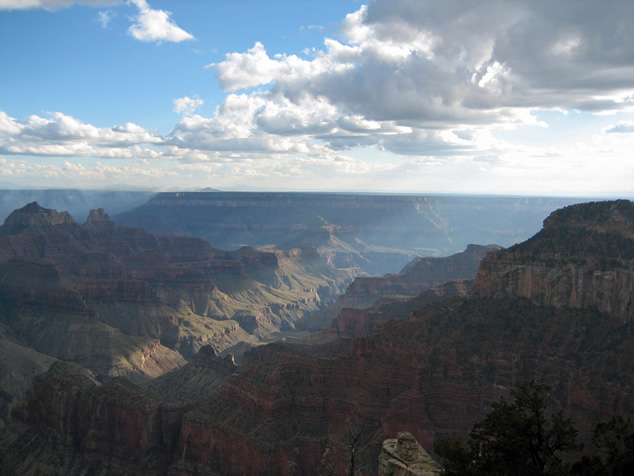
The north rim of the Grand Canyon is Kaibab Paiute territory
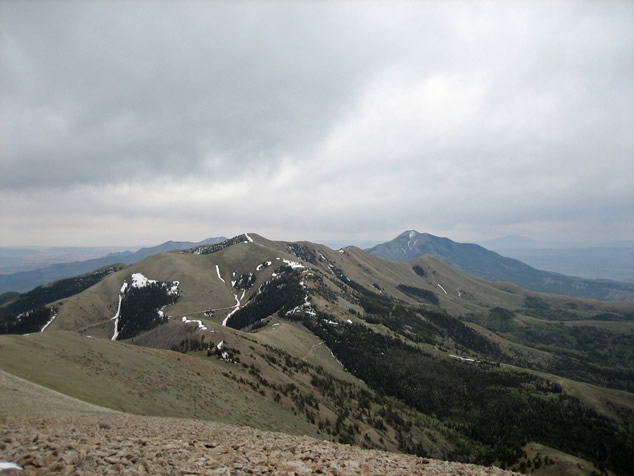
Alpine terrain at the northeastern end of the Southern Paiute homelands
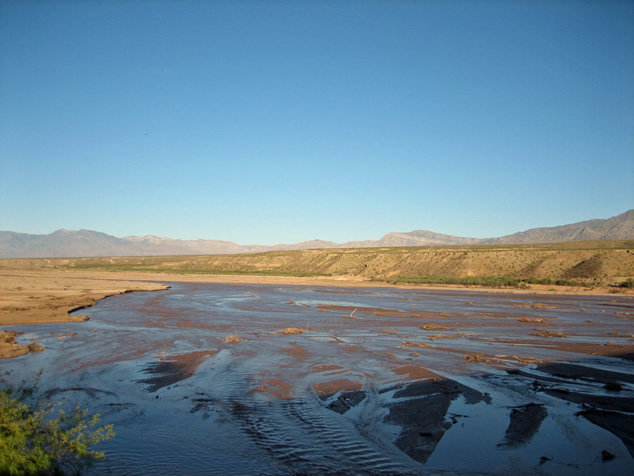
The Virgin River is the largest river lying wholly within the Southern Paiute homelands
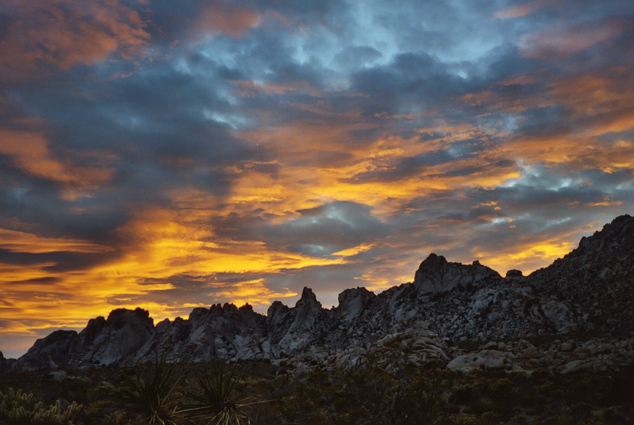
Night falls in Chemehuevi territory
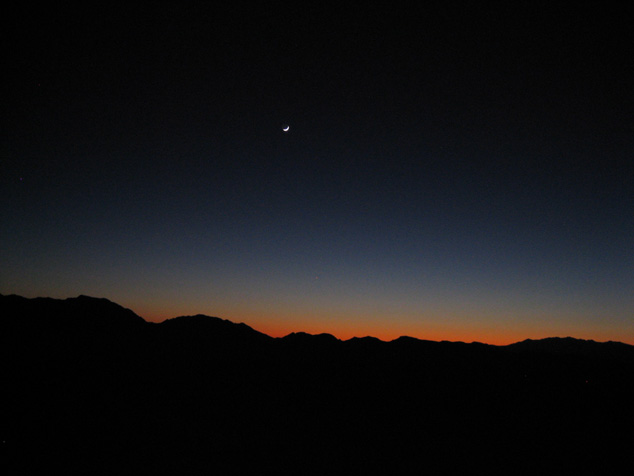
This crescent moon will soon set, and the stars will own the night sky. Fortunately desert campers seldom need a roof over their heads. Max loves to wake throughout the night, checking the progress of the Milky Way - the Chemehuevis' Dusty Trail of the Spirits - as it swings from east to west. |
|
 |
|
Seasons
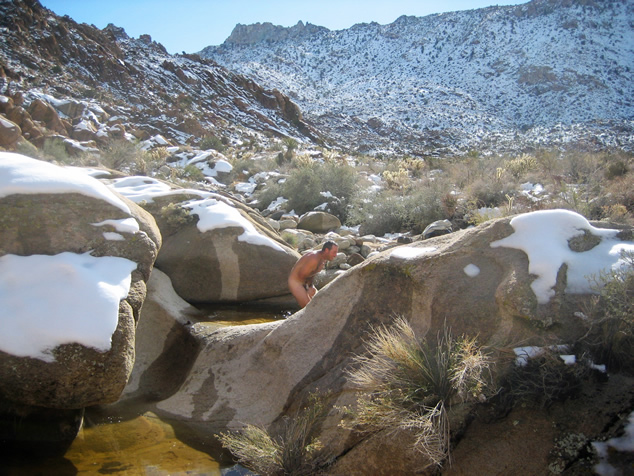
Beginning the new year in Chemehuevi territory with a dip in snowmelt, on Winter Solstice 2008
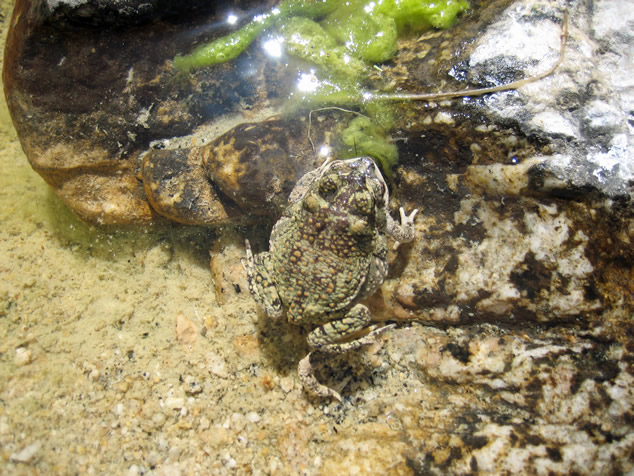
In springtime, winter runoff brings out the toads
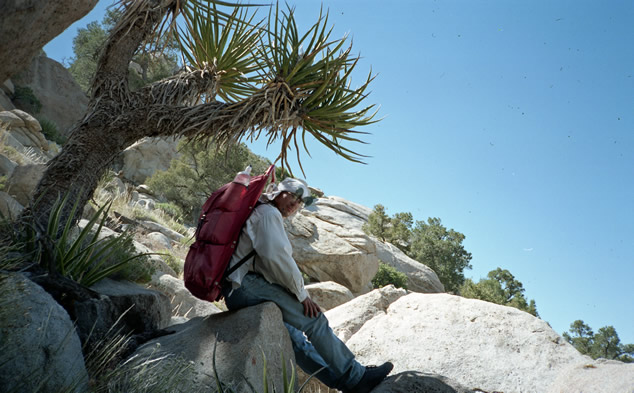
On the summer solstice, every patch of shade is precious
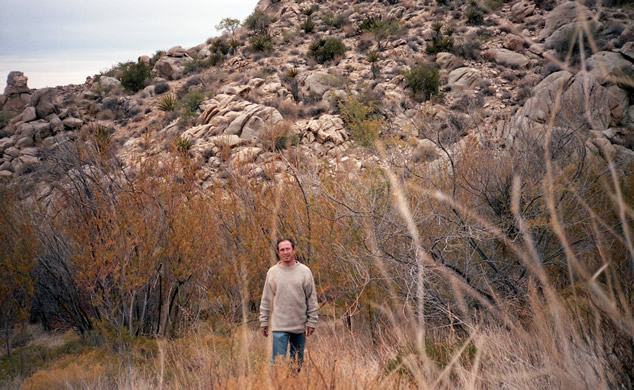
Max strolls through the amber autumn foliage of coyote willows, high in a desert mountain range
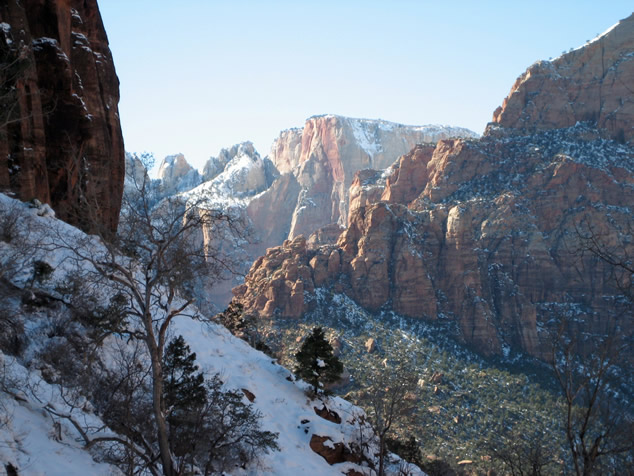
Winter snow blankets Zion Canyon, in Kaibab Paiute territory
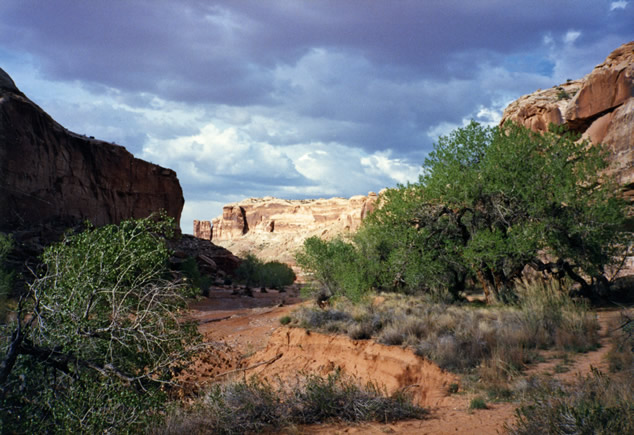
Storm clouds move over a canyon in springtime, at the eastern end of Southern Paiute territory
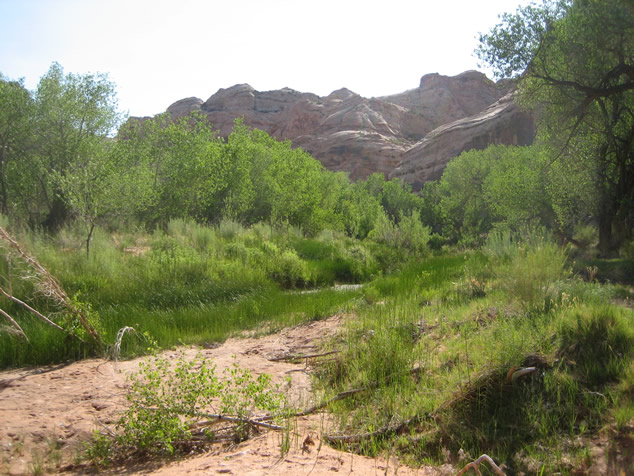
Bullrushes line a canyon-bottom pond in mid-summer
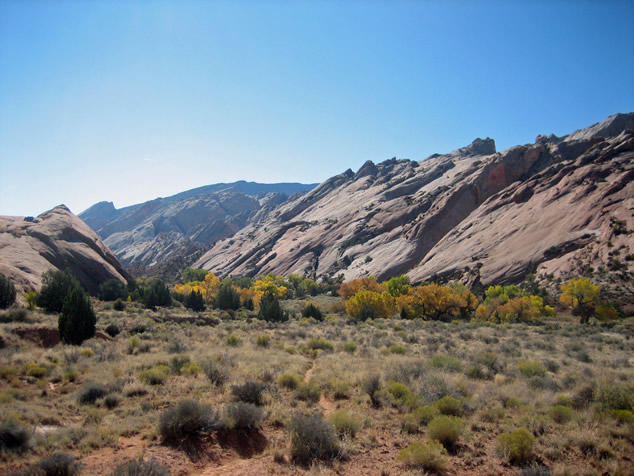
Cottonwoods turn gold in autumn at the eastern end of the Southern Paiute homelands |
|
 |
|
Life
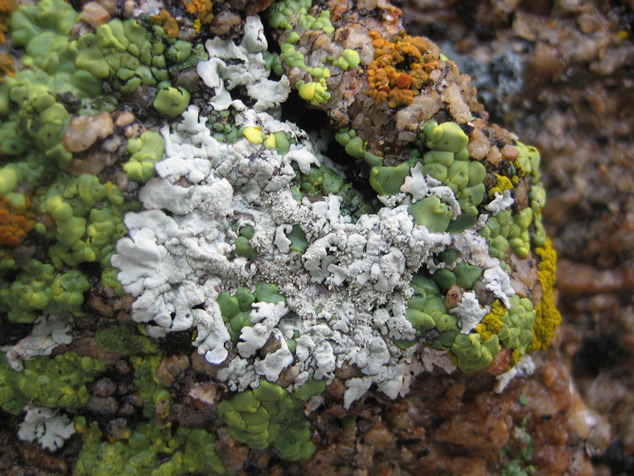
Revitalized by winter snowfall, lichens do their job of liberating nutrients from granitic rock in Chemehuevi territory
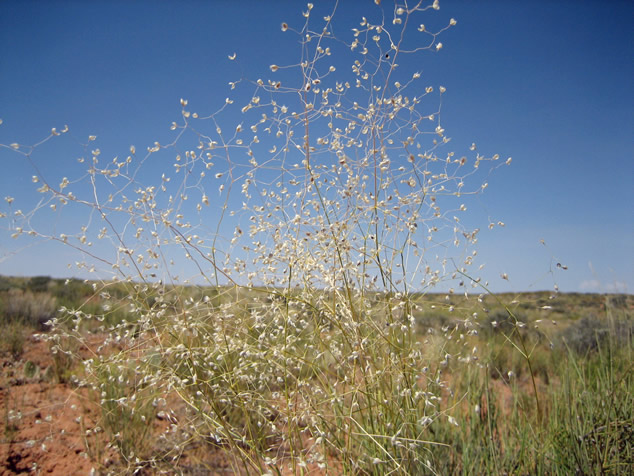
Maturing in sandy areas in late summer, the seeds of Indian ricegrass were an important food for all Southern Paiutes
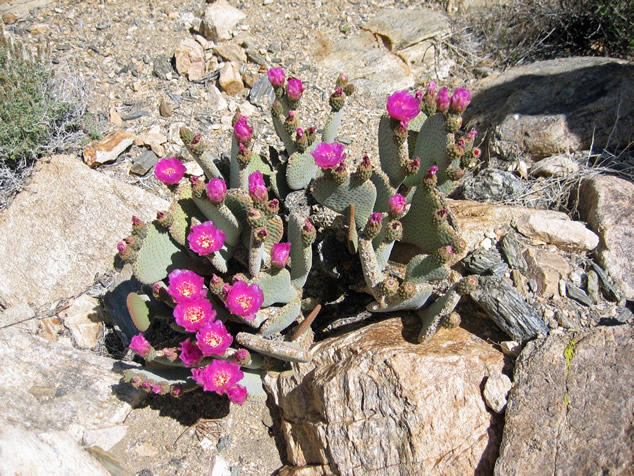
The flower buds of the beavertail cactus are delicious when steamed - something like asparagus
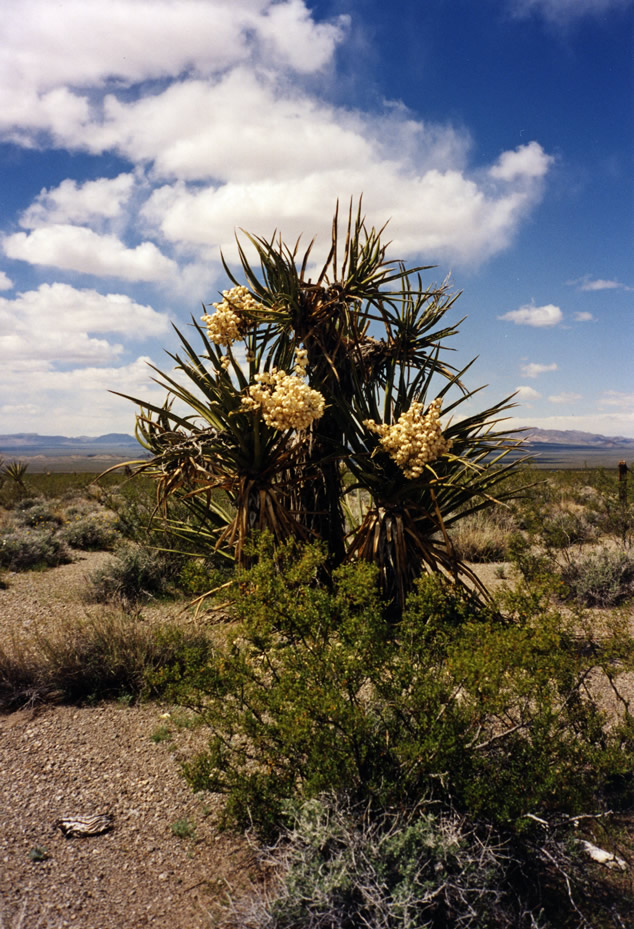
Both these yucca flowers and the resulting fruit were edible; the Southern Paiute wove mats and sandals from the blades and made soap from the roots
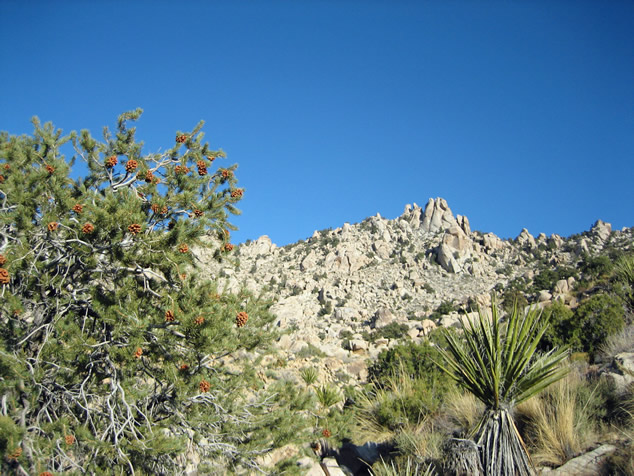
Pinyon pine nuts were an important food for the Chemehuevis and a staple for Southern Paiutes living at higher elevations
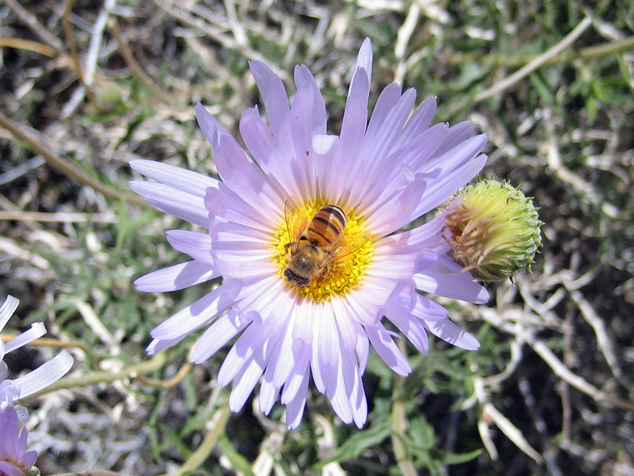
Chemehuevi territory is paradise for bees with its year-round wildflowers, and humans and other animals share in the honey they make from nectar
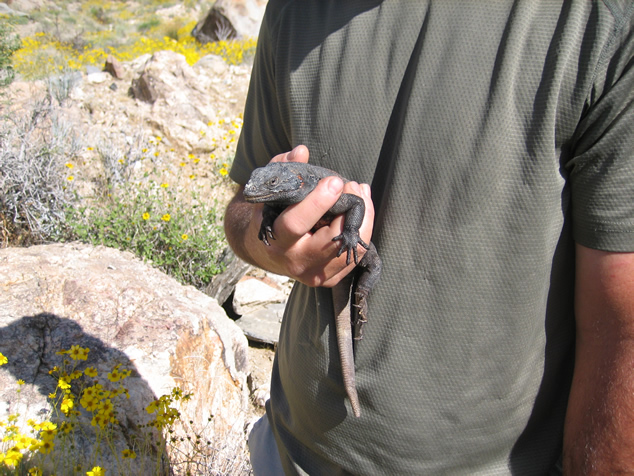
The largest lizard of the Southern Paiute deserts, the chuckwalla is a flower-eating vegetarian; Southern Paiutes cooked and ate their muscular tails
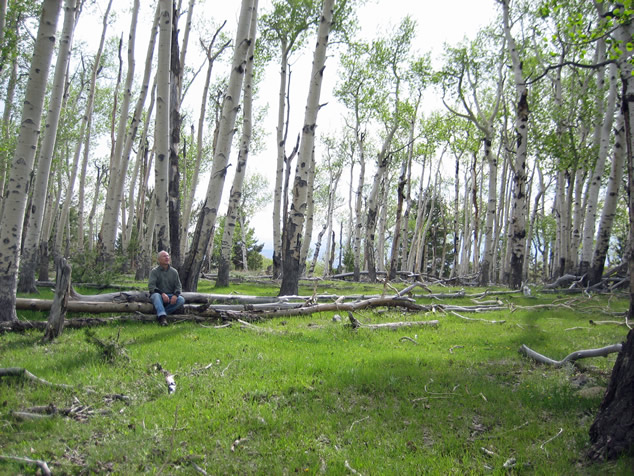
Max marveling at the morning interactions of a mixed-species community of birds, in an alpine aspen grove at the eastern end of the Southern Paiute homelands in 2014
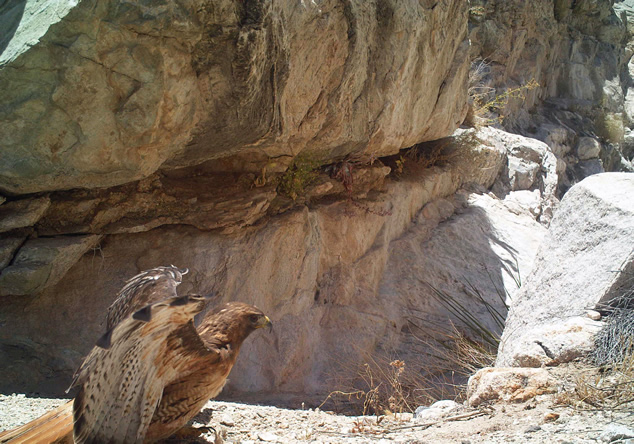
A motion sensor camera captured this redtail hawk landing at a spring on Max's land
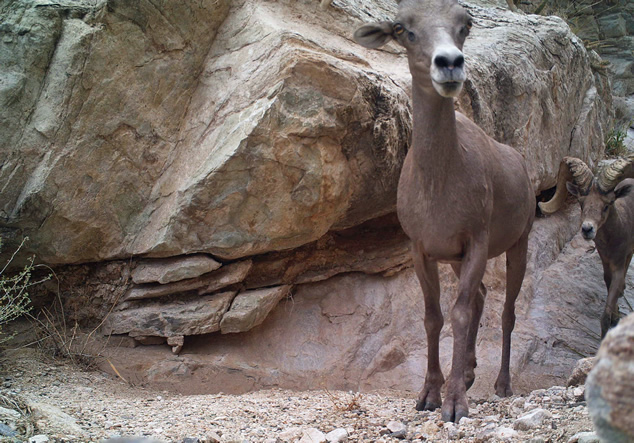
Mountain sheep, Holy Grail of the Chemehuevi diet, on Max's land
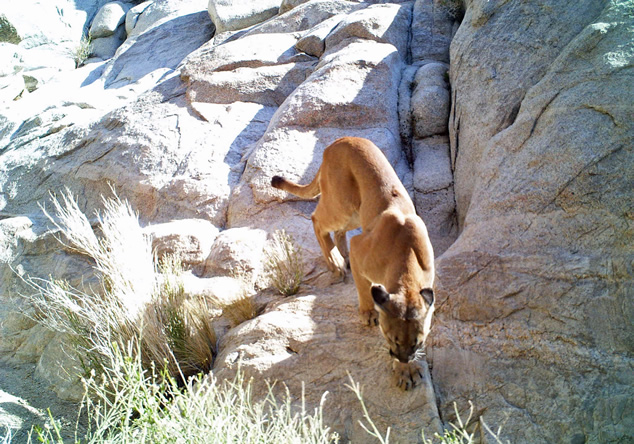
Mountain lion, the mountain sheep's other natural predator, at a spring near Max's land |
|
 |
|
Traces of the Old Ones
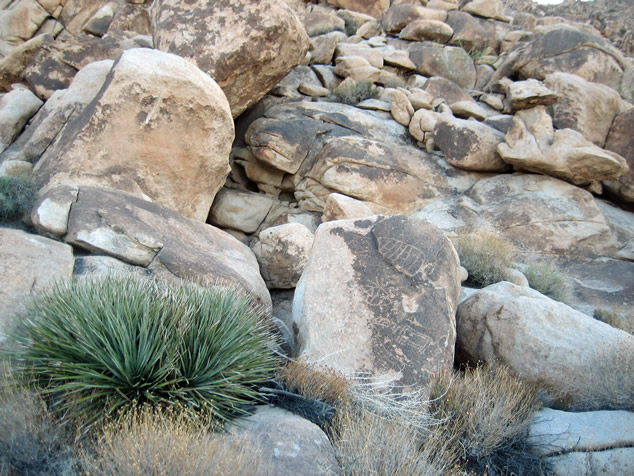
The Old Ones communicated across time via stylized carvings in the desert varnish of boulders and cliff faces.
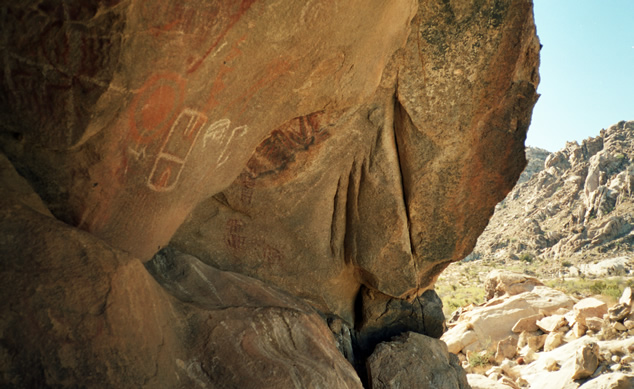
Max likes to think of this Chemehuevi fertility site as the "Uluru" of North America
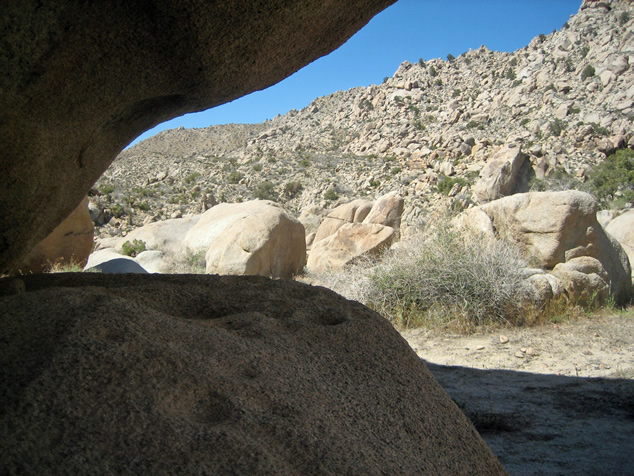
Max discovered this girls' puberty campsite on a high plateau in the midst of Chemehuevi territory. According to archaeologists, the girls ran dozens of miles across the desert to this remote place, led by their adult sponsor. In the carved "cupules" of this granite table, they mixed body paint which they used in their rite of passage.
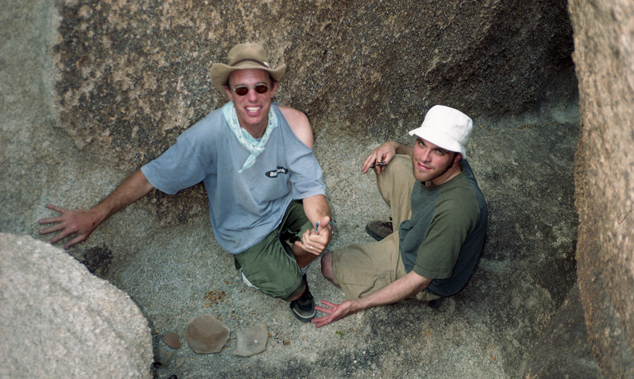
Max's friends discover fragments of an olla or large pottery storage vessel deep in a crevice between granite boulders. Paiutes made low-fired, typically undecorated pottery containers on the spot and left them behind when starting a migration, to save weight.
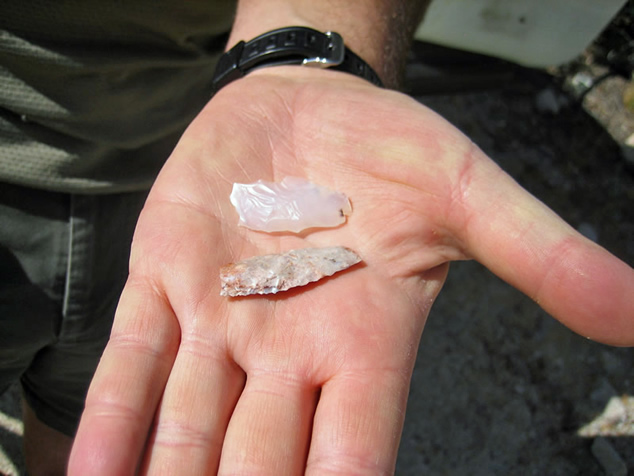
A toolmaking flake and a small arrowhead or "bird point" found by one of Max's scientist friends. Everything the Chemehuevis needed could be made by hand and carried with them on their walking migrations.
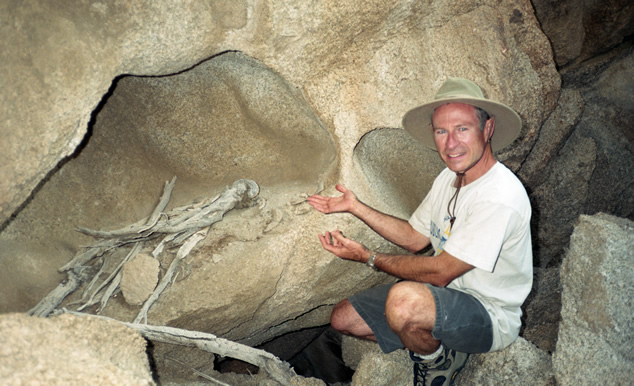
A shrine to the last Chemehuevi medicine man, discovered by Max and his friends, hidden deep in a rock crevice atop a ridge, in 2001. The old man claimed mountain sheep medicine, and the shrine includes a wooden staff with roots in the shape of a ram's horns.
|
|
|
 |
 |
|